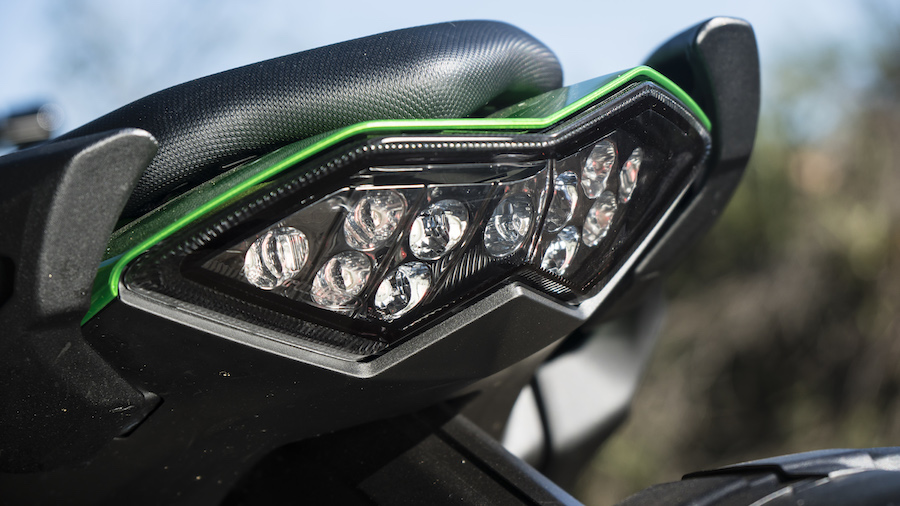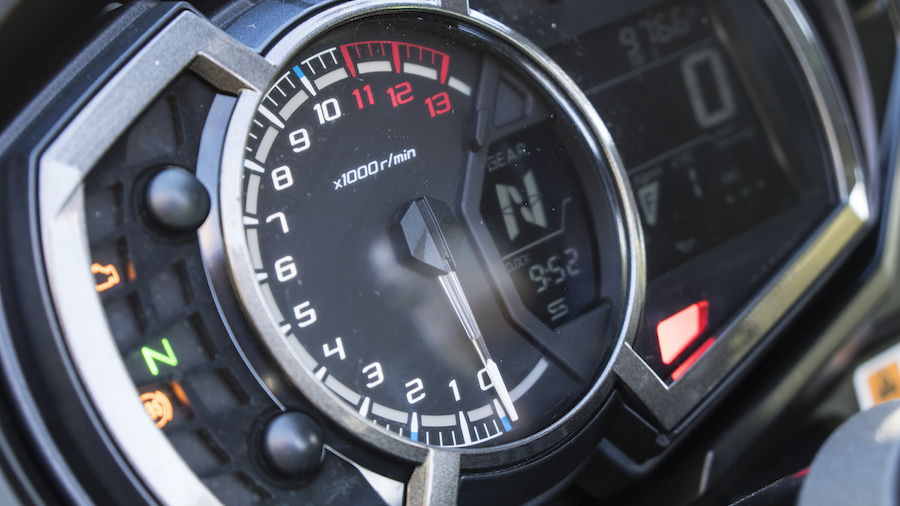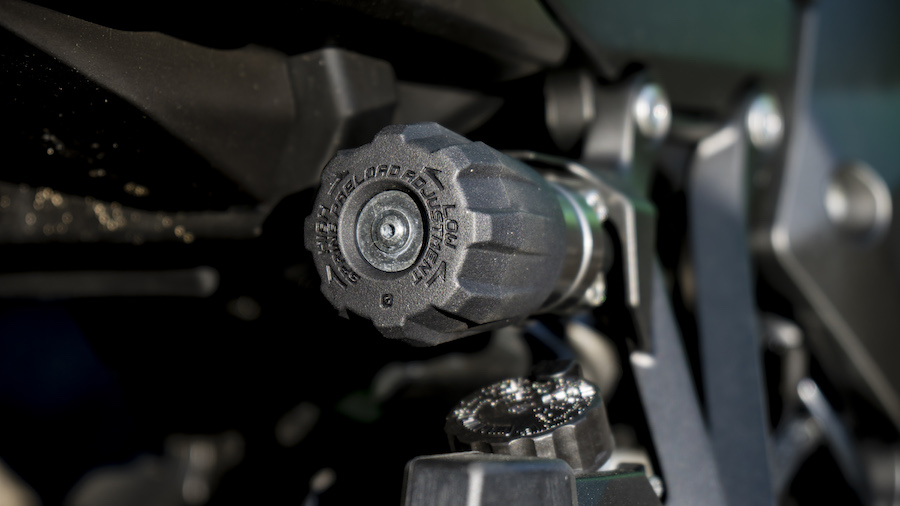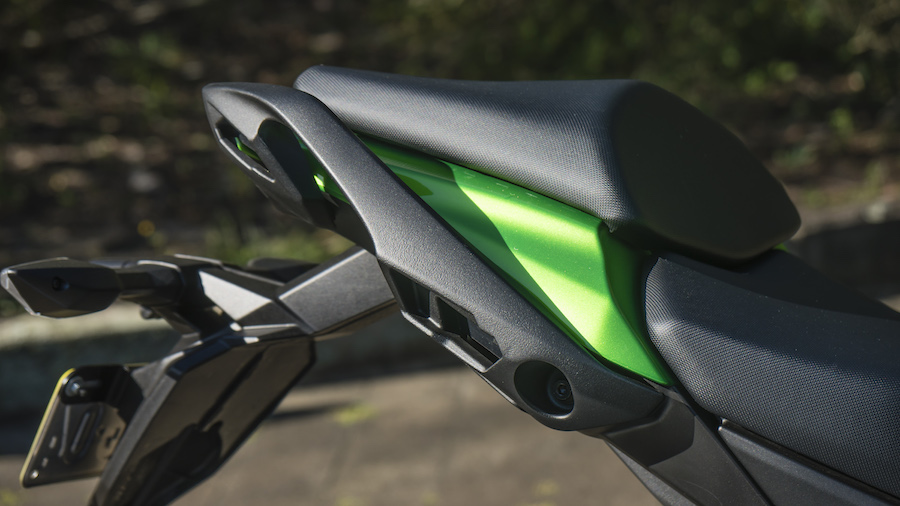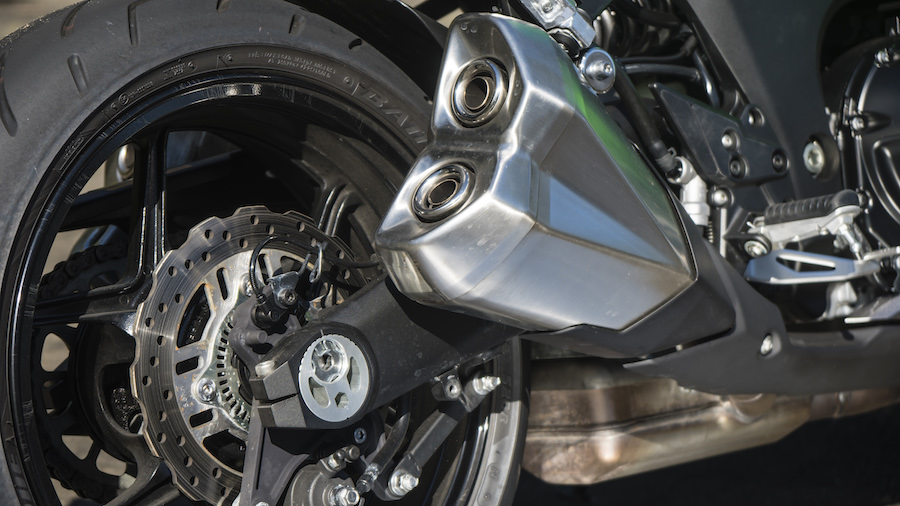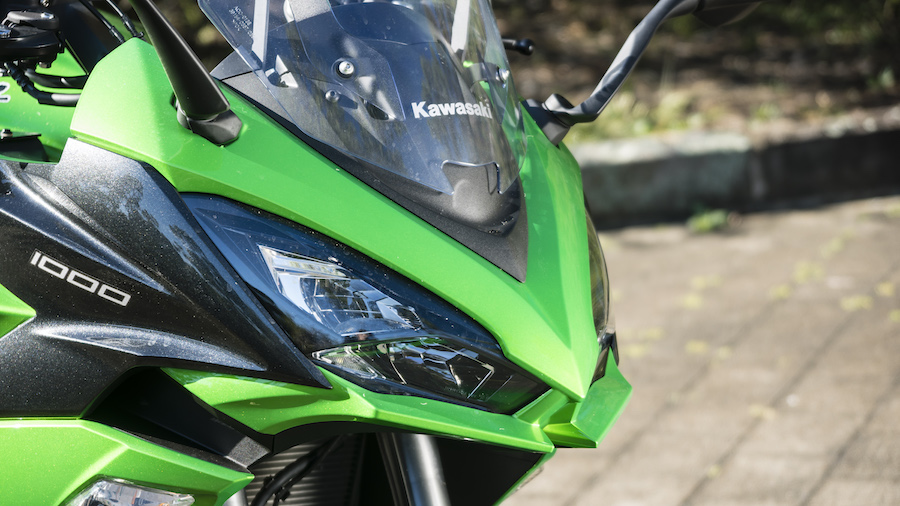Big bikes equal big smiles with Kawasaki, and some of my best motorcycling memories are tinged with green. Busting a sub-10 second quarter on a stock ZX-14R roadbike was one such smiley occasion. Riding AMCN’s rabid Project ZX-12R through a soggy World Superbike paddock as the thing tried to spit me off, in the very week I first started at the mag in 2001, wasn’t smiley for me, but it was for the drenched onlookers as they anticipated the crash that thankfully never came.
Punching mega kays out the back wheel of a 1400GTR en route to Melbourne from Sydney, the back way – very, very smiley, in a teeth-gritted, snarly, determined sort of a way. That was a great ride, and in fact, I’ve managed to make friends with every big Kwaka I’ve ridden.
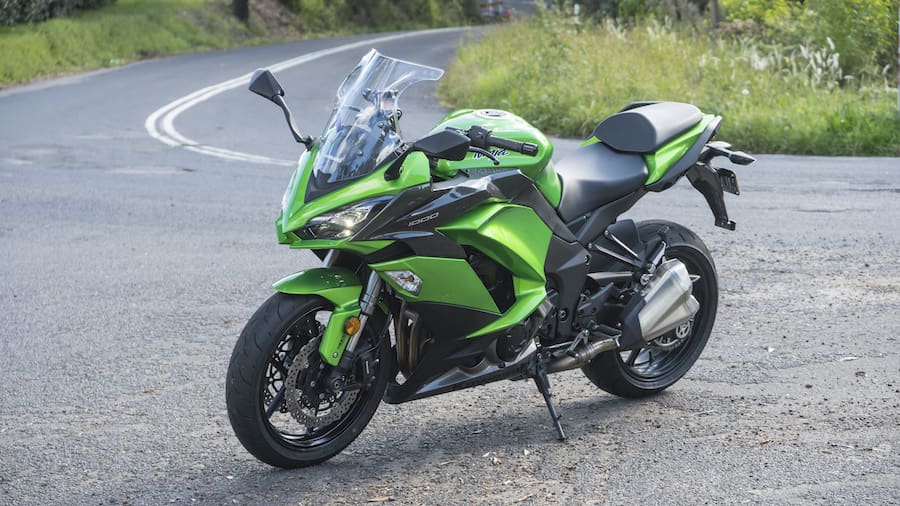
Kawasaki does big bikes well, and for me it has generally been a happy, smirky experience with the big green beasts. And Kawasaki’s third-generation Ninja 1000 ticks most of the same boxes – with one exception.
On the upside, the electronics upgrade is a major one, with an Inertial Measurement Unit providing additional data on the position of the bike. This has allowed cornering ABS to be added to the electronic goodness, and there’s also a traction control system that takes lean angle into account.

This kind of stuff was once the domain of top-shelf sportsbikes, but is now available on such well-priced machines as the Ninja 1000, which Kawasaki is offering for $16,299 (+ ORC). On a remote and patchy back road, these systems are a worthy safety net.
Kawasaki has always done engines well, and the 1043cc in-line four based on the Z1000’s unit is another winner in that genre. The 104.5kW claimed peak at 10,000rpm isn’t monstrous, but 111Nm at 7300rpm is quality torque for road use. The bike is brimming with premium power delivery, which is satisfying and practical.
The throttle does feel a little ‘fly-by-wire’ compared to the previous model (although it’s still a conventional cable set-up), with less direct connection to what is going on at the rear wheel. However, fuelling is clean and my desire to short-shift these types of bikes – as opposed to strangling their upper thorax with wristfuls of revs – is met well. And the engine sounds great. It wallops where it should wallop, yet allows casual commuter-GP wins from the lights to stay in clear air ahead of traffic.

Unfortunately, the engine and various 2017 upgrades being so good only highlights the handling, which I felt was far from fantastic.
So adept at producing big mile-eating machines is Kawasaki, that the shock at discovering one not so good is extra shocking, but it’s true. The new Ninja 1000 is that rare thing in the modern world – a bike that doesn’t handle as well as it should. And that’s a bugger because everything else about it is so wonderfully greeny good.
In a straight line, the Ninja 1000 doesn’t want to steer off that line, feeling raked out at the front and low in the rear. It takes big, unnatural effort to turn it into a corner, and then it gives up resisting, and drops on its side way too quickly. It just shouldn’t be this hard to steer.
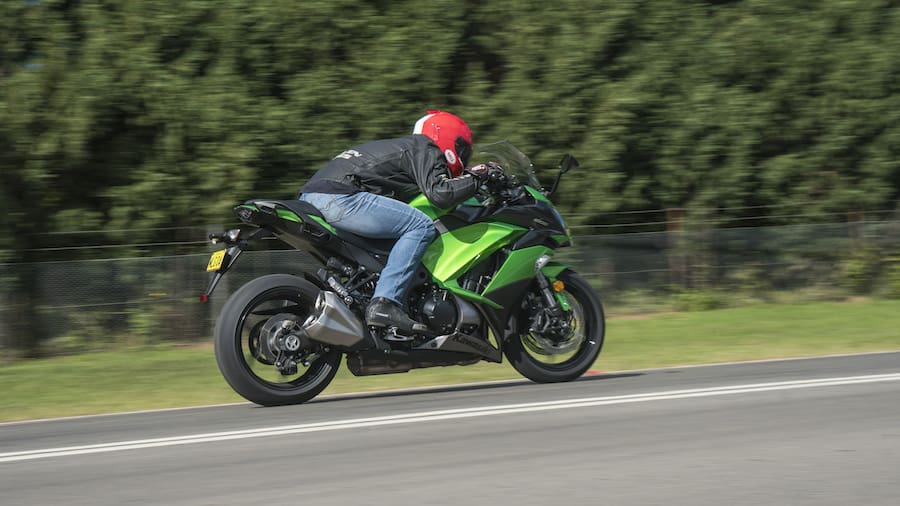
So I reached for the Ninja 1000’s handy rear spring preload adjuster – a feature all tourers should offer, whether electronic or manual such as this one. I wanted to lift the rear and put more weight on the front of the bike, but there wasn’t enough adjustment to make a dent in how it felt.
I went up and down the fork preload, wound the compression and rebound damping all the way on, then the opposite.
I continued playing with the suspension settings, and it got better for sure, but still wasn’t up to the standard Kawasaki has set for itself with front-end solidity. The Z900 I tested in AMCN Vol 66 No 22 for instance, is one of the best front ends for a bike in that price range, ever. My old ZXRs were slow-ish steering, but the front ends were something you could build your house on.
Why does it do it? I suspect the quest for lower seat heights has led to a geometry-unfriendly rear linkage, coupled with soft fork springs and a rare mistake from the Big Green Giant. Would a new linkage and fork spring fix it? I’d love to try because, if it worked, then I could enjoy the rest of what this bike has to offer.

The pillion accommodation, for instance, with its monster grabrails, and that afore-mentioned spring preload to assist dealing with different pillion/luggage modes, is made even more valuable thanks to the panniers Kawasaki offers.
Loading this thing up and heading for distant destinations is easy.
Helping you enjoy that engine is the assist and slipper clutch. The assist is brilliant for keeping your clutch hand unfatigued.
Selecting modes – engine power, traction levels, etc. – is the same as on the old bike, with the left-hand mounted toggle switch and select button making it easy to change settings. I left the bike in High Power mode most of the time, as it’s easy to use and has the best feel at the twist grip. It is possible to turn the traction control off, though the bike defaults back to on each time the ignition is turned off.
Tucked in behind the fairing is a comfortable place to be. The bulbous shape of the mid-fairing section is off-putting to some – based on the usual unsolicited commentary I receive from passers-by every time I test a new bike – but I liked it, and it worked well in both cold and moist conditions. The adjustable screen is likewise useable and offers a solid frontal area to deflect some of the cold. Cruise control and heated grips would have been nice on a tourer – they are extras.
Kawasaki has also updated the face of the bike for a more modern, sportier look. With a pointy beak and angular front fairing, there’s an obvious shout out to the ZX-10R. The lines of the side fairing are more aggressive too. They’re cosmetic touches, but they’ve been done well.
As the breakout on page 33 details, there’s a long feature list with the new Ninja 1000: electronic features, pillion passenger features, engine features. What I want most from a bike, however, is the ability to give me confidence, and to offer me enough feel to be able to have fun on it, use it to get to work quickly and fright-free, and allow me to let my hair down when the time and place is right. The Ninja 1000 has the ability to deliver all of this, but for me it’s hindered by its untoward handling. Others may ride the bike and wonder what the hell I’m talking about; after all my good times with Kawasaki, I expect more.
Still the price is great, the engine is a beauty, the IMU electronics represent a new dawn for mid-priced bikes in terms of equipment spec, and the Ninja 1000’s versatility also makes it an attractive proposition. And all this will no doubt put a big smile on the faces of customers in the target touring market.
BEST BITS
- IMU-equipped electronics package
- Serious weather protection, including adjustable screen
- Pannier system available
- LED headlights
- Excellent pillion accommodation, including grabrails, and a pre-load adjuster to fine-tune the weight management (careful how you explain that to pillions).
- 19-litre fuel tank and therefore generous range (350km plus)
- Wider mirrors making for easy rear view
- A quality dash
Rival Rides
What is the Ninja 1000 up against in the sports-tourer market?

Cornering ABS
So, Cornering ABS means you can just steam into a corner, brake like Márquez, and survive, right? Kinda. The whole point of cornering ABS, and the reason it needs an IMU to facilitate it, is that it allows a rider to brake too hard for the tyres; however, instead of letting the brakes off entirely, which stands the bike up and generally runs it wide in a corner, it recognises the cornering behaviour and allows the rider to not lock the front, yet complete the corner.
Standard ABS does a great job of keeping the tyre on the right side of traction, but in a cornering situation it can alter the line of the bike too much in order to keep it gripping. Cornering ABS recognises that the bike is in a corner, by reading pitch and lean angle information provided by the IMU, and keeps the wheel from locking while still allowing the rider to take the corner.
Its job is even more complex than standard ABS, which is already pretty impressive! The latest Bosch systems will outbrake most riders in all conditions, but it still pays to know how to brake properly. Relying on technology to keep you rubber side down is a flawed technique! And just remember, as good as motorcycle ABS tech is becoming, the ability of modern cars to brake in tiny distances is incredibly scary for a following motorcyclist. The average family car has more braking performance at the foot of an average driver than ever before. Worth remembering!
For Kawasaki, having cornering ABS on a $16K bike is a big deal, even if it is the crest of a wave – many lower-priced bikes will be similarly equipped in the near future, too.

WORDS & PHOTOGRAPHY SAM MACLACHLAN
